Kyoritsu KT 200 Handleiding
Kyoritsu
Multimeter
KT 200
Bekijk gratis de handleiding van Kyoritsu KT 200 (1 pagina’s), behorend tot de categorie Multimeter. Deze gids werd als nuttig beoordeeld door 209 mensen en kreeg gemiddeld 4.6 sterren uit 105 reviews. Heb je een vraag over Kyoritsu KT 200 of wil je andere gebruikers van dit product iets vragen? Stel een vraag
Pagina 1/1

INSTRUCTION MANUAL
AC DIGITAL CLAMP METER
KT200
1. Features
Safety design conforming to the following provi-
sions of IEC61010.
Measurement category III 300V, pollution degree 2,
Measurement category
II 600V, pollution degree 2,
Data hold switch for easy reading in dimly light
or hard-to-read locations.
Sleep feature to extend battery life.
Beeper permits easy continuity check.
Provides a dynamic range of 4,000 counts full scale.
2. Safety Warnings
This instruction manual contains warnings and
safety rules which must be observed by the user to
ensure safe operation of the instrument and retain it
in safe condition. Therefore, read through these
operating instructions before using the instrument.
# WARNING
Read through and understand instructions contained
in this manual before using the instrument.
Save and keep the manual handy to enable
quick reference whenever necessary.
The instrument is to be used only in its intended
applications.
Understand and follow all the safety instructions
contained in the manual.
Failure to follow the instructions may cause injury,
instrument damage and/or damage to equipment
under test. Kyoritsu is by no means liable for any
damage resulting from the instrument in
contradiction to this cautionary note.
The symbol # indicated on the instrument means
that the user must refer to related parts in the
manual for safe operation of the instrument. Be
sure to carefully read the instructions following
each # symbol in this manual.
#
DANGER is reserved for conditions and actions
that are likely to cause serious or fatal injury.
#
WARNING is reserved for conditions and
actions that can cause serious or fatal injury.
#
CAUTION is reserved for conditions and
actions that can cause minor injury or
instrument damage.
Following symbols are used on the instrument and
in the instruction manual. Attention should be paid
to each symbol to ensure your safety.
#
Refer to the instructions in the manual.
This symbol is marked where the user must
refer to the instruction manual so as not to
cause personal injury or instrument damage.
Indicates an instrument with double or
reinforced insulation.
Indicates that this instrument can clamp on
bare conductors when measuring a voltage
corresponding to the applicable Measurement
category, which is marked next to this symbol.
Indicates AC (Alternating Current).
Indicates AC and DC.
Indicates Earth.
This marking means they shall be sorted out
and collected as ordained in DIRECTIVE
2006/66/EC.
This directive is valid only in the EU. When you
remove batteries from this product and
dispose them, discard them in accordance
with domestic law concerning disposal. Take a
right action on waste batteries, because the
collection system in the EU on waste batteries
are regulated.
# DANGER
Never make measurement on a circuit with a
voltage higher than 600 VAC/DC.
Do not attempt to make measurement in the
presence of flammable gasses, fumes, vapor or
dust. Otherwise, the use of the instrument may
cause sparking, which can lead to an explosion.
Transformer jaws are made of metal and their
tips are not insulated. Where equipment under
test has exposed conductive parts, be
especially careful to avoid the hazard of
possible shorting.
Never attempt to use the instrument if its
surface or your hand is wet.
Do not exceed the maximum allowable input of
any measurement range.
Never open the battery compartment cover
when making measurement.
Verify proper operation on a known source
before use or taking action as a result
indication of the instrument.
Keep your fingers and hands behind the
protective fingerguard during measurement.
# WARNING
Never attempt to make any measurement if any
abnormal conditions are noted, such as broken
case, cracked test leads and exposed metal part.
Do not turn the function selector switch with plugged
in test leads connected to the circuit under test.
Do not install substitute parts or make any
modification to the instrument. Return the
instrument to your distributor for repair or
recalibration.
Do not try to replace the batteries if the
surface of the instrument is wet.
Always switch off the instrument before
opening the battery compartment cover for
battery replacement.
Stop using the test lead if the outer jacket is
damaged and the inner metal or color jacket
is exposed.
# CAUTION
Make sure that the function selector switch is
set to the appropriate position before making
measurement.
Always make sure to insert each plug of the test
leads fully into the appropriate terminal on the
instrument.
Make sure to remove the test leads from the
instrument before making current measurem-ent.
Do not expose the instrument to the direct sun,
extreme temperatures or dew fall.
Be sure to set the function selector switch to the
position after use. When the instrument will
not be in use for a long period of time, place it in
storage after removing the battery.
This instrument isn't dust & water proofed. Keep
away from dust and water.
Use a damp cloth and detergent for cleaning the
instrument. Do not use abrasives or solvents.
Working voltage is specified according to each
Measurement category, which is defined in safety
standards.It is to protect the user from transient
impulse, which presents in the circuit under test.
Measurement categories are defined as follows.
CATⅡ: Primary electrical circuits of equipment
connected to an AC electrical outlet by a
power cord.
CATⅢ: Primary electrical circuits of the equipment
connected directly to the distribution panel,
and feeders from the distribution panel to
outlets.
3. Specifications
Measuring Ranges and Accuracy
( ℃at 23±5 , 45-75% relative humidity)
AC Current( )A
Range Measuring Range Accuracy
40A 0-39.99A ± 2.0%rdg ± 6dgt
( )50/60Hz
400A 0-399.9A
AC Voltage( )V Auto-ranging
Range Measuring Range Accuracy
400V 0-399.9V ± 2.0%rdg ± 5dgt
( )50/60Hz
600V 150-599V
DC Voltage( )V Auto-ranging
Range Measuring Range Accuracy
400V 0-399.9V ± 1.5%rdg ± 5dgt
600V 150-599V
Resistance(Ω/Continuity)Auto-ranging
(Buzzer beeps below 50±35Ω)
Range Measuring Range Accuracy
400 0-399.9Ω Ω ±2.0%rdg±5dgt
4000 150-3999Ω Ω
EMC( )IEC61000-4-3 :
RF electromagnetic field<1V/m;
total accuracy=specified accuracy
RF electromagnetic field=3V/m;
total accuracy=specified accuracy
+2% of range
Operating System : Dual Integration
Display : Liquid crystal display
( )maximum count: 3999
Low Battery Warning :
is shown on the display
Overrange Indication :
OL.is shown on the display
Response Time : Approx. 2 seconds
Sample Rate : About 2.5 times per second
Temperature and Humidity for Guranteed
Accuracy:
23±5 , relative humidity up to 85%℃
without condensation
Operating Temperature and Humidity :
0〜40℃, relative humidity up to 85%
without condensation
Storage Temperature and Humidity :
-20 , relative humidity up to 85%〜60℃
without condensation
Power Source :
Two R03 or equivalent ( )DC1.5V batteries
Current Consumption :
Approx. 2.5mA max.
Sleep Function :
Automatically powered down in about 10
m i n u t e s a f t e r t h e l a s t s w i t c h
operation(power consumption in the sleep
mode is about 20μA.)
Standards :
IEC61010-1, -2-032, -2-033
CAT III 300V, CAT II 600V, pollution degree 2
IEC61010-031
IEC61326-1, -2-2 (EMC)
EN50581 (RoHS)
Overload Protection :
AC current ranges : 480A AC/DC for 10sec
AC voltage ranges : 720V AC/DC for 10sec
Resistance ranges : 300V AC/DC for 10sec
Operating Environmental Conditions :
Indoor use, Altitude up to 2000m
Withstand Voltage :
3470VAC( )RMS,50/60Hz for 5 seconds
between electrical circuit and housing case
Insulation Resistance
10M or greater at 1000V between elect-Ω
rical circuit and housing case
NOTE
During current measurement, keep the trans-
former jaws fully closed. Otherwise, accurate
measurement cannot be made. The maxi-mum
conductor size is 30 mm in diameter.
When measuring a larger current, the trans-
former jaws may buzz. This does not affect the
instrument's accuracy.
5-2 AC Voltage Measurement
# DANGER
Never use the instrument on a circuit with a
voltage higher than 600 VAC. Otherwise,
electric shock hazard or damage to the
instrument or the circuit under test may result.
Do not make measurement with the battery
compartment cover removed.
Keep your fingers and hands behind the
protective fingerguard during measurement.
( )1 Set the function selector switch to the
position.
( )2
Plug the red test lead into the V/ terminal Ω
and the black test lead into the COM terminal.
( )3
Connect the test lead prods to the circuit
under test and take the reading on the display.
5-3 DC Voltage Measurement
# DANGER
Never use the instrument on a circuit with a
voltage higher than 600VDC. Otherwise,
electric shock hazard or damage to the
instrument or the circuit under test may result.
Do not make measurement with the battery
compartment cover removed.
Keep your fingers and hands behind the
protective fingerguard during measurement.
( )1
Set the function selector switch to the
position.
( )2
Plug the red test lead into the V/ terminal Ω
and the black test lead into the COM terminal.
( )3
Connect the test lead prods to the circuit
under test and take the reading on the display.
5-4 Resistance Measurement
# DANGER
Always make sure that the circuit under test is
powered off.
Do not make measurement with the battery
compartment cover removed.
Keep your fingers and hands behind the
protective fingerguard during measurement.
( )1
Set the function selector switch to the
position.
( )2
Plug the red test lead into the V/ terminal Ω
and the black test lead into the COM terminal.
( )3
Check that the display readsOL.with the test
lead prods shorted together, also check that the
buzzer beeps and the display reads0.
( )4 Connect the test lead prods to the circuit
Conductor Size :
Approx. 30 mm diameter max
Dimensions :
184( )L x 44( )W x 27( )D mm
Weight :
Approx. 190g( )including batteries
Accessories :
Test lead (M-7066A)
Two R03 batteries
Instruction manual
4. Preparation for Measurement
4-1 Checking Battery Voltage
Set the function selector switch to any position
other than . When the display is clear
without showing, proceed to measu-
rement. When the display blanks or is
indicated, replaces the batteries according to the
instructions described in section 7. Battery
Replacement.
NOTE
The sleep feature automatically turns the instru-
ment off in a certain period of time after the last
switch operation. Therefore, the display may be
blank with the function selector switch set to a
position other than . To operate the
instrument in this case, set the switch back to the
position, then to the desired position, or
press any switch. If the display still blanks, the
batteries are exhausted. Replace the batteries.
4-2 Checking Switch Setting and Operation
Make sure that the function selector switch is set to
the correct position and the data hold switch is
deactivated. Otherwise, desired measurement
cannot be made.
5. Measurement
5-1 AC Current Measurement
# WARNING
Do not make measurement on a circuit with a
voltage higher than 600 VAC. Otherwise,
shock hazard or damage to the instrument or
equipment under test may result.
Transformer jaw tips are designed to minimize
the possibility of shorting conductors in the
circuit under test. If equipment under test has
exposed conductive parts, however, extra
precaution should be taken to avoid possible
shorting.
Do not make measurement with the battery
compartment cover removed.
Do not make current measurement with the
test leads connected to the instrument.
It is a part providing protection against electrical
shock and ensuring the minimum required air
and creepage distances. Keep your fingers and
hands behind the barrier during measurement.
( )1
Set the function selector switch to the
or position.
( )2 Press the trigger to open the transformer
jaws and clamp onto one conductor only.
( )3 Take the reading on the display.
under test and take the reading on the
display. The buzzer beeps the reading is
below 50±35 . Ω
NOTE
When shorting the test lead prods together, the
display may show a very small resistance
instead of 0. This is the resistance of the
test leads.
If one of the test leads has an open, the display
reads OL.
6. Other Functions
6-1 Sleep Function
NOTE
The instrument still consumes small amount of
battery power in the sleep mode. Make sure to
set the function selector switch to the
position after use.
( )1 Sleep Mode
This is a function to prevent the instrument from
being left powered on in order to conserve battery
life. This function causes the instrument to
automatically enter the sleep( )powered down
mode about 10 minutes after the last switch or
button operation.
To exit the sleep mode, turn the function selector
switch back to , then to any other position,
or press any button.
( )2 How to disable the sleep mode
To disable the sleep mode, Power the instrument
on with the data hold switch pressed. P.OFF is
shown on the display for about 3 seconds after the
instrument is powered on.
To enable the sleep mode, power the instrument
off, then power it on without pressing the data hold
switch.
6-2 Data Hold Function
This is a function used to freeze the measured
value on the display. Press the data hold switch to
freeze the reading. The reading will be held
regardless of subsequent changes in input.
is shown on the upper left corner of the display
while the instrument is in the data hold mode.
To exit the data hold mode, press the data hold
switch again.
NOTE
If the instrument in the data hold mode enters
the sleep mode, the data hold mode will be
ca-ncelled.
7.Battery Replacement
# WARNING
To avoid electric shock hazard, make sure to set
the function selector switch to and
remove the test leads from the instrument
before trying to replace the batteries.
# CAUTION
Do not mix new and old batteries
Make sure to install battery in correct polarity
as indicated inside the battery compartment.
When is shown on the display, replace the
batteries. Note that when the battery is
completely exhausted, the display blanks without
shown.
( )1
Set the function selector switch to the
position.
( )2 Unscrew and remove the battery compa-
rtment on the bottom of the instrument.
( )3 Replace the batteries observing correct
polarity. Use two new R03 or equivalent
batteries.
( )4 Mount and screw the battery compartment
cover.
Transformer Jaws
Barrier
Data Hold Switch
Function Selector Switch
Display
V/ TerminalΩ
COM Terminal
Protective fingerguard (Barrier):
It is a part providing protection against electrical shock and
ensuring the minimum required air and creepage distances.
Cap:
Uncapped condition for CAT II environment
Capped condition for CAT III/ IV environments
The Cap shuld be firmly attached to the probes.
Trigger
Cap Protective fingerguard
1.5V
1.5V
Battery Compartment
2 R03 or 1.5V AA×
A
92-1454D
Product specificaties
| Merk: | Kyoritsu |
| Categorie: | Multimeter |
| Model: | KT 200 |
Heb je hulp nodig?
Als je hulp nodig hebt met Kyoritsu KT 200 stel dan hieronder een vraag en andere gebruikers zullen je antwoorden
Handleiding Multimeter Kyoritsu

1 December 2024

1 December 2024

1 December 2024

5 Januari 2024

5 Januari 2024

5 Januari 2024

5 Januari 2024

5 Januari 2024

4 Januari 2024

4 Januari 2024
Handleiding Multimeter
- Jung
- Micronta
- Skandia
- Benning
- Projecta
- Rigol
- Kewtech
- Schneider
- MGL Avionics
- Högert
- Cablexpert
- Powerfix
- Amprobe
- Testboy
- Sonel
Nieuwste handleidingen voor Multimeter
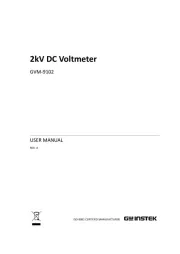
8 September 2025
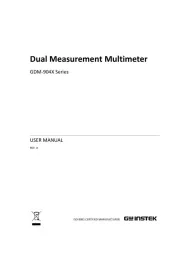
8 September 2025
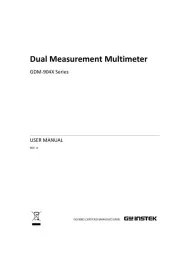
8 September 2025
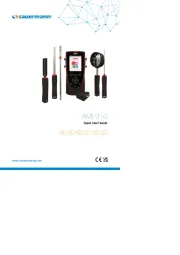
1 September 2025
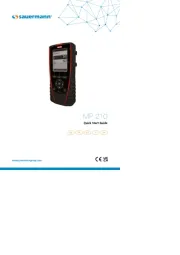
1 September 2025
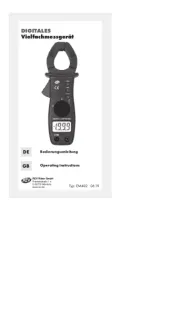
30 Augustus 2025
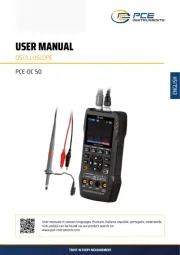
25 Augustus 2025

25 Augustus 2025
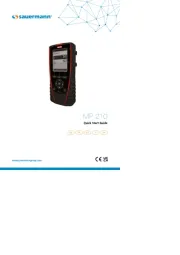
14 Augustus 2025
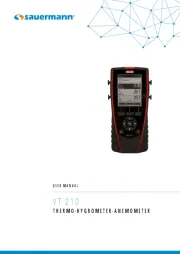
14 Augustus 2025